23Mar
Lesson Plan > Lesson 28 > Mathematics
Elementary Level: Patterns and Sequences
Mid Level: Mental Math Strategies
High Level: Review of Ratios, Integers, and Rational Numbers
Elementary Level (Kinder to Grade 2)
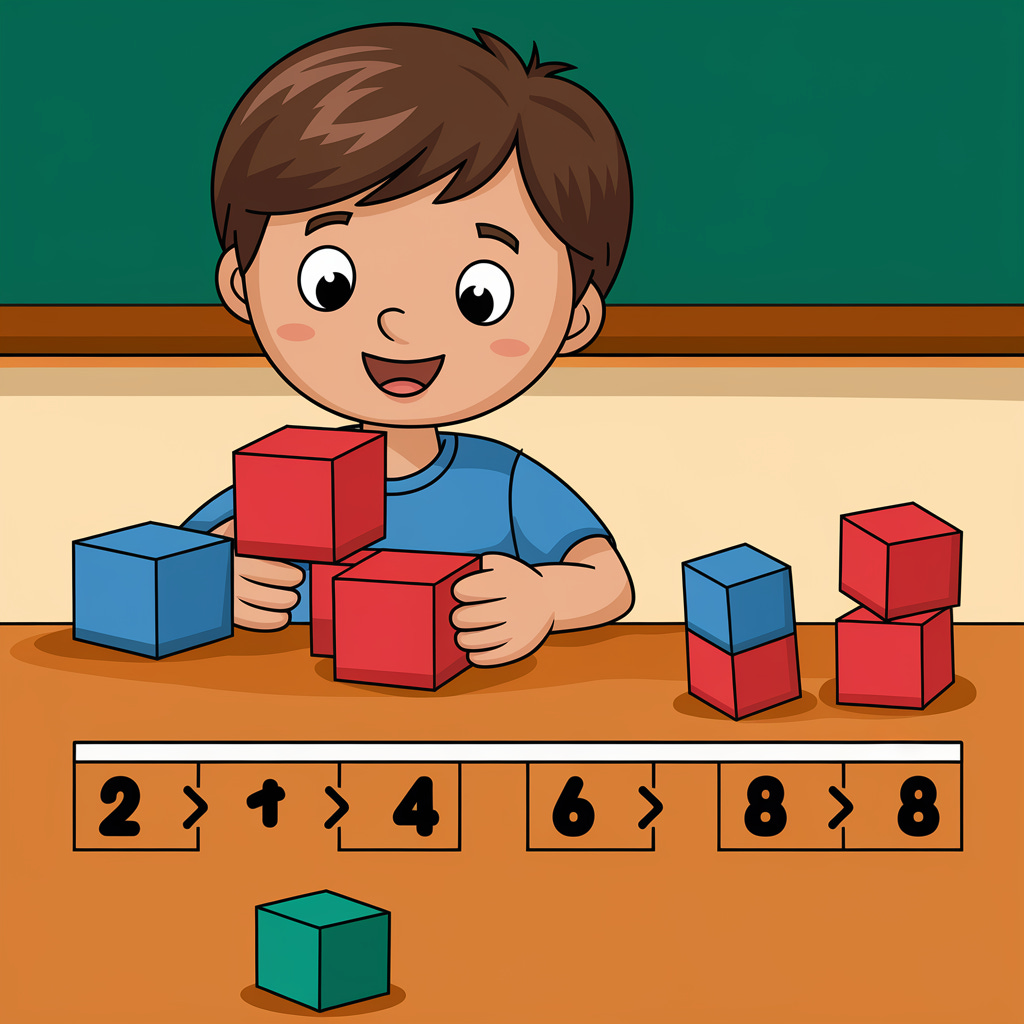
Subject: Patterns and Sequences
Alignment with Standards:
- Common Core State Standards (CCSS):
- CCSS.MATH.CONTENT.1.OA.C.5: Relate counting to addition and subtraction (e.g., by counting on 2 to add 2) (links to number sequences).
- CCSS.MATH.CONTENT.1.OA.D.8: Determine the unknown whole number in an addition or subtraction equation relating three whole numbers (extends to filling in patterns).
- CCSS.MATH.CONTENT.K.OA.A.3: Decompose numbers less than or equal to 10 into pairs in more than one way (builds foundation for pattern recognition).
Objectives
- Understand that patterns are repeating or growing sequences of shapes, colors, or numbers.
- Identify and create patterns using objects and extend them logically.
- Explore patterns with blocks and number sequences through hands-on activities.
- Build observation, prediction, and early algebraic thinking skills.
Materials
- Pattern blocks (e.g., triangles, squares, hexagons in different colors) or household items (e.g., buttons, cereal)
- Paper or notebook for drawing/writing
- Crayons, markers, or pencils
- Number sequence cards (e.g., 2, 4, 6, __ or 5, 10, 15, __)
- Optional: Counting bears, a number line (0-20), or a pattern book (e.g., Pattern Fish by Trudy Harris)
Activities
Day 1: Introduction to Patterns with Blocks (30-45 minutes)
- Warm-Up (5-10 minutes):
- Ask: “Look at my shirt—stripes go red, blue, red, blue. That’s a pattern! What’s a pattern you see?”
- Say: “Patterns repeat or grow—let’s make some!”
- Direct Instruction (10 minutes):
- Show blocks: “Red triangle, blue square, red triangle, blue square—what’s next? (red triangle!)”
- Explain: “Patterns follow a rule—like ‘red, blue’ over and over.”
- Try another: “Yellow circle, yellow circle, green hexagon—rule? (two yellows, one green)”
- Practice (15-20 minutes):
- Build: Start “red, blue, red, blue” with blocks—they add 3 more.
- Create: “Make your own pattern!” (e.g., “circle, square, circle, square”). Say it aloud.
- Read Pattern Fish (if available): Spot patterns (e.g., “stripe, dot, stripe”).
- Wrap-Up (5 minutes):
- Ask: “What’s your pattern rule? Show me what’s next!”
Day 2: Number Sequences (45 minutes)
- Review (10 minutes):
- Recap: “What’s a pattern? Show me ‘big, small, big, small’ with your hands!”
- Quick block pattern: “Red, red, blue—what’s next? (red!)”
- Hands-On Activity: Number Patterns (25 minutes):
- Show: “2, 4, 6—what’s next? (8) Rule? (add 2 each time)”
- Count aloud: “5, 10, 15—next? (20)” Use fingers or blocks to see “add 5.”
- Cards: Lay out “3, 6, 9, __” and “1, 3, 5, __”—they finish (12, 7).
- Make one: “Start with 4, add 3 each time—go!” (4, 7, 10, 13)
- Wrap-Up (10 minutes):
- Ask: “What’s the rule for 10, 20, 30? (add 10) How do numbers pattern?”
Day 3: Extending and Assessing Patterns (45 minutes)
- Warm-Up (10 minutes):
- Say: “Clap a pattern: loud, soft, loud, soft—what’s next?”
- Quickie: “2, 5, 8—next? (11)”
- Hands-On Activity: Mixed Patterns (20 minutes):
- Blocks: “Red, yellow, red, yellow, red—extend it!” (yellow, red, yellow).
- Numbers: “1, 2, 3, 4—next 3!” (5, 6, 7) or “10, 8, 6—next!” (4).
- Draw: “Make a shape pattern—circle, square, triangle, circle—keep going!”
- Assessment: Fill in Missing Elements (15 minutes):
- Give patterns:
- Blocks: “Blue, green, blue, __” (green).
- Numbers: “5, 10, __, 20” (15).
- Mixed: “Star, heart, star, __, star” (heart).
- Check: “What’s the rule? How do you know?” (e.g., “Add 5!”)
- Draw one missing: “2, 4, __, 8” (6).
- Give patterns:
- Wrap-Up (5 minutes):
- Celebrate: “You’re a pattern pro! What’s a pattern you’d make tomorrow?”
Assessment
- Informal Observation: Note their ability to spot and extend patterns in activities.
- Block Patterns: Check if they add 2-3 correct steps (e.g., red, blue, red, blue → red, blue).
- Assessment Task: Ensure they fill in 4/5 missing elements correctly with a rule explanation.
Extensions
- Pattern hunt: Find patterns outside (e.g., “leaf, no leaf” on a plant).
- Sound patterns: Clap or tap “loud, loud, soft”—extend it!
- Challenge: “3, 6, 9, 12—backwards!” (9, 6, 3).
Mid Level (Grade 3 to 5)
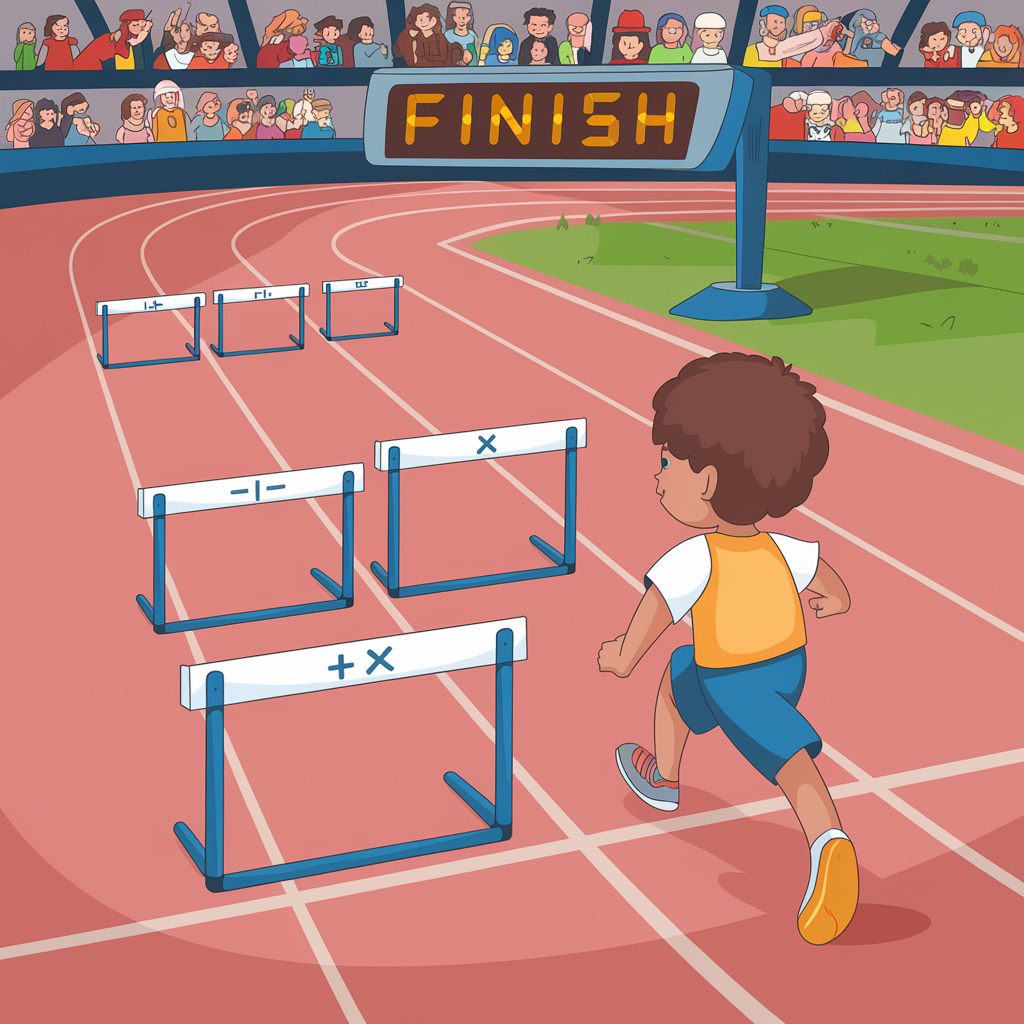
Subject: Mental Math Strategies
Alignment with Standards:
- Common Core State Standards (CCSS):
- CCSS.MATH.CONTENT.4.NBT.B.4: Fluently add and subtract multi-digit whole numbers using the standard algorithm (mental strategies enhance fluency).
- CCSS.MATH.CONTENT.4.OA.A.1: Interpret a multiplication equation as a comparison (supports mental multiplication).
- CCSS.MATH.CONTENT.4.NBT.B.5: Multiply a whole number of up to four digits by a one-digit whole number, and multiply two two-digit numbers, using strategies based on place value and the properties of operations.
- CCSS.MATH.CONTENT.4.NBT.B.6: Find whole-number quotients and remainders with up to four-digit dividends and one-digit divisors (mental division builds on this).
Objectives
- Understand and apply mental math strategies for addition, subtraction, multiplication, and division.
- Perform calculations quickly and accurately without paper or pencil.
- Practice mental math skills through timed challenges to build fluency and confidence.
- Develop number sense and problem-solving abilities through strategic thinking.
Materials
- Flashcards with math problems (e.g., 45 + 27, 63 – 19, 7 × 8, 36 ÷ 4)
- Timer or stopwatch (manual or phone app)
- Whiteboard or paper (for explanations, not solving during challenges)
- Small counters or blocks (optional for visualizing)
- Mental math worksheet (sample provided below)
- Optional: Dice, a number chart (0-100)
Activities
Day 1: Mental Math Strategies for Addition and Subtraction (45 minutes)
- Warm-Up (10 minutes):
- Ask: “What’s 10 + 7? (17) Now 17 – 5? (12) How did you do it in your head?”
- Say: “We’re learning tricks to solve math fast—without writing!”
- Direct Instruction (15 minutes):
- Teach strategies:
- Addition:
- Break apart: 45 + 27 = 40 + 20 = 60, 5 + 7 = 12, 60 + 12 = 72.
- Round and adjust: 48 + 19 = 48 + 20 = 68, 68 – 1 = 67.
- Subtraction:
- Count up: 63 – 19 = 19 + 1 = 20, 20 + 40 = 60, 60 + 3 = 63, so 44.
- Adjust: 50 – 28 = 50 – 30 = 20, 20 + 2 = 22.
- Addition:
- Model: “35 + 18 = 35 + 20 = 55, 55 – 2 = 53.”
- Teach strategies:
- Practice (15-20 minutes):
- Try: 26 + 39 (65), 72 – 47 (25). “Tell me your trick!”
- Flashcards: 5 quick ones (e.g., 54 + 29, 81 – 36)—verbal answers.
- Wrap-Up (5 minutes):
- Ask: “Which strategy was easiest? Where could you use this?”
Day 2: Mental Math for Multiplication and Division (45 minutes)
- Review (10 minutes):
- Recap: “What’s 43 + 19? (62) 65 – 27? (38) How’d you do it?”
- Hands-On Activity: Multiplication and Division Strategies (25 minutes):
- Teach strategies:
- Multiplication:
- Doubles/Halves: 6 × 8 = 3 × 16 = 48 (double 6, half 8).
- Break apart: 14 × 3 = 10 × 3 = 30, 4 × 3 = 12, 30 + 12 = 42.
- Division:
- Related facts: 36 ÷ 4 = think 4 × ? = 36 (9).
- Chunking: 48 ÷ 6 = 6 × 8 = 48, so 8.
- Multiplication:
- Model: “7 × 9 = 7 × 10 = 70, 70 – 7 = 63.” “24 ÷ 3 = 3 × 8 = 24, so 8.”
- Practice: 5 × 12 (60), 45 ÷ 5 (9). “What’s your method?”
- Flashcards: 5 quick ones (e.g., 8 × 7, 32 ÷ 4).
- Teach strategies:
- Wrap-Up (10 minutes):
- Discuss: “Which was faster—multiplying or dividing? Why?”
Day 3: Timed Math Challenges (45 minutes)
- Warm-Up (10 minutes):
- Quickie: “9 + 8? (17) 15 × 2? (30) 20 ÷ 4? (5)”
- Say: “Let’s race our brains with timed challenges!”
- Hands-On Activity: Challenges (25 minutes):
- Set timer (1-2 min per round):
- Round 1 (Addition): 5 problems (e.g., 34 + 28, 67 + 19). Goal: 4/5 right.
- Round 2 (Subtraction): 5 problems (e.g., 83 – 47, 55 – 29).
- Round 3 (Multiplication): 5 problems (e.g., 6 × 9, 13 × 4).
- Round 4 (Division): 5 problems (e.g., 40 ÷ 5, 72 ÷ 9).
- Worksheet sample:
- 25 + 37 = __ (62)
- 91 – 46 = __ (45)
- 7 × 8 = __ (56)
- 63 ÷ 7 = __ (9)
- Say answers aloud, track score: “How many in 1 minute?”
- Retry: Beat your time or score!
- Set timer (1-2 min per round):
- Wrap-Up (10 minutes):
- Reflect: “What strategy helped most? What’s your fastest operation?”
Assessment
- Informal Observation: Note their strategy use and speed during practice.
- Flashcards: Check accuracy (e.g., 80% correct verbally).
- Timed Challenges: Ensure 4/5 correct per round with a clear method explained.
Extensions
- Math duel: Parent vs. kid—5 problems, who’s faster?
- Real life: “Estimate grocery cost—$12 + $8, then split by 2 people.”
- Mix it: “15 + 6 × 2—what’s first?” (27).
High Level (Grade 6 to 8)

Subject: Review of Ratios, Integers, and Rational Numbers
Alignment with Standards:
- Common Core State Standards (CCSS):
- CCSS.MATH.CONTENT.7.RP.A.1: Compute unit rates associated with ratios of fractions, including ratios of lengths, areas, and other quantities measured in like or different units.
- CCSS.MATH.CONTENT.7.NS.A.1: Apply and extend previous understandings of addition and subtraction to add and subtract rational numbers; represent addition and subtraction on a horizontal or vertical number line diagram.
- CCSS.MATH.CONTENT.7.NS.A.2: Apply and extend previous understandings of multiplication and division and of fractions to multiply and divide rational numbers.
- CCSS.MATH.CONTENT.7.NS.A.3: Solve real-world and mathematical problems involving the four operations with rational numbers.
Objectives
- Review and reinforce understanding of ratios, integers, and rational numbers.
- Apply operations (addition, subtraction, multiplication, division) to integers and rational numbers accurately.
- Consolidate skills through engaging games and quizzes that test ratios and number concepts.
- Build confidence and fluency in working with proportional relationships and rational number operations.
Materials
- Index cards or paper slips for game problems (e.g., “2:3 ratio, 6 total—what’s each part?”)
- Dice (2-3) or a spinner for random numbers
- Number line (drawn or printed, -10 to 10)
- Quiz worksheet (sample provided below)
- Notebook or paper for tracking scores/answers
- Optional: Counters, a timer, digital quiz tool (e.g., Kahoot if available)
Activities
Day 1: Review and Ratio Games (45 minutes)
- Warm-Up (10 minutes):
- Ask: “What’s 3:5 if there’s 8 total? (3 and 5) What’s -4 + 6? (2)”
- Say: “We’re brushing up on ratios, integers, and rational numbers with fun games!”
- Direct Instruction (15 minutes):
- Recap:
- Ratios: Compare parts (e.g., 2:3 = 2 to 3, or 2/5 total). Unit rate: 12 miles in 3 hours = 4 mph.
- Integers: Whole numbers, positive/negative (e.g., -5, 0, 7). Add: -3 + 8 = 5. Subtract: 4 – (-2) = 6.
- Rational Numbers: Fractions/decimals (e.g., 1/2, -0.75). Multiply: 1/3 × 6 = 2. Divide: -4 ÷ 1/2 = -8.
- Model: “Ratio 4:5, 9 total. 4 parts = 4, 5 parts = 5, 1 part = 1, so 4 and 5.”
- Recap:
- Hands-On Activity: Ratio Game (20 minutes):
- Game: Ratio Roll
- Roll 2 dice (e.g., 2, 3). Make a ratio (2:3). “15 total—how many each?” (6 and 9).
- 5 rounds, track correct answers.
- Discuss: “How’d you split it? What’s the unit rate?” (e.g., 2/5 = 0.4 per part).
- Game: Ratio Roll
- Wrap-Up (5 minutes):
- Ask: “What’s a ratio you made? How do integers fit in?”
Day 2: Integer and Rational Number Games (45 minutes)
- Review (10 minutes):
- Recap: “What’s -7 + 3? (-4) 2:4 ratio, 10 total? (4 and 6)”
- Hands-On Activity: Number Line Race (25 minutes):
- Game: Integer Dash
- Use number line. Start at 0. Draw card (e.g., “+5,” “-3”). Move and say new spot (5, then 2).
- Add rationals: “+1/2,” “-3/4.” 5 rounds, aim for a target (e.g., 4).
- Game: Rational Match
- Cards: 1/2 × 4, -6 + 2, 8 ÷ 1/4. Match to answers (2, -4, 32). 5 pairs, time it.
- Discuss: “What’s trickier—adding negatives or dividing fractions?”
- Game: Integer Dash
- Wrap-Up (10 minutes):
- Reflect: “Which move was fastest? How do rationals change the game?”
Day 3: Quiz and Mixed Review (45 minutes)
- Warm-Up (10 minutes):
- Quickie: “3:7, 20 total? (6 and 14) -5 × 2? (-10) 1/3 + 2/3? (1)”
- Hands-On Activity: Quiz Challenge (25 minutes):
- Worksheet quiz:
- Ratios: “3:2, 15 total—what’s each?” (9, 6)
- Integers: “-8 + 12 = __” (4), “6 – (-3) = __” (9)
- Rationals: “1/4 × 8 = __” (2), “-6 ÷ 1/2 = __” (-12)
- Mixed: “Ratio 1:3, 1 part is -4—what’s total?” (-16)
- Time it (10 min): 8-10 questions, check together.
- Bonus game: “Roll 3 dice (2, 4, 5). Make a problem!” (e.g., 2:4, 5 is 2 parts—total 12.5).
- Worksheet quiz:
- Wrap-Up (10 minutes):
- Discuss: “What’s your quiz score? Which skill was strongest?”
Assessment
- Informal Observation: Note accuracy and strategy use in games.
- Game Scores: Check 70-80% correct answers (e.g., 4/5 per round).
- Quiz: Ensure 80% accuracy (e.g., 8/10 right) across ratios, integers, rationals.
Extensions
- Real-world mix: “2:3 juice ratio, 10 cups total, 20% spills—left?” (8 cups).
- Number line art: Plot 5 moves (e.g., -2, +3/4), draw the path.
- Speed round: 10 rapid-fire questions—beat your time!


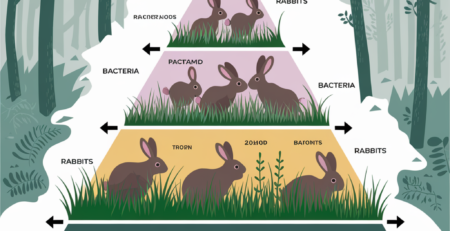

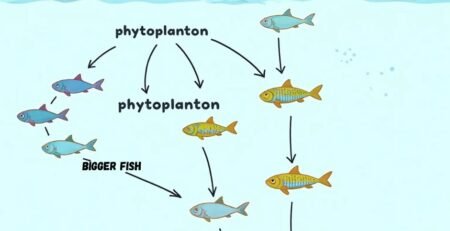



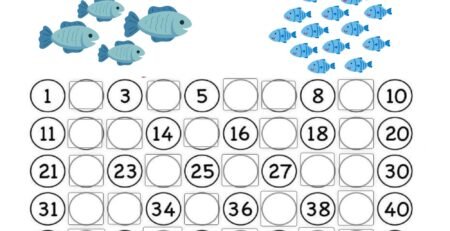




LEAVE A COMMENT